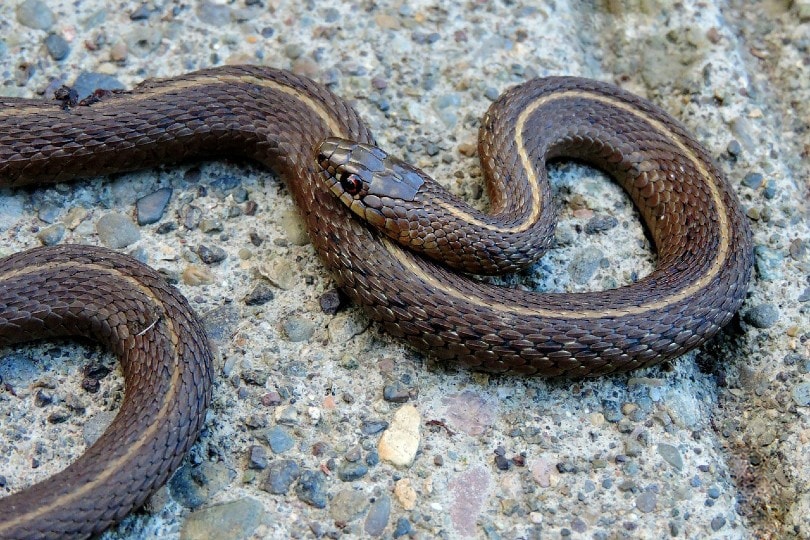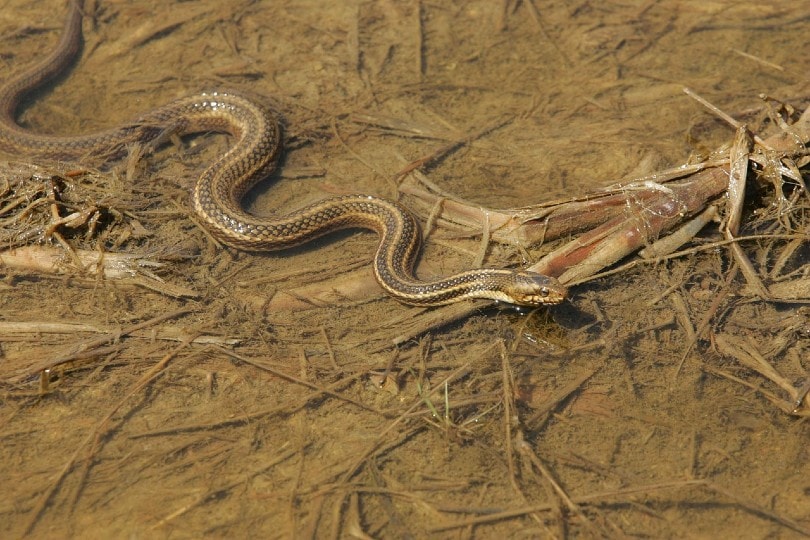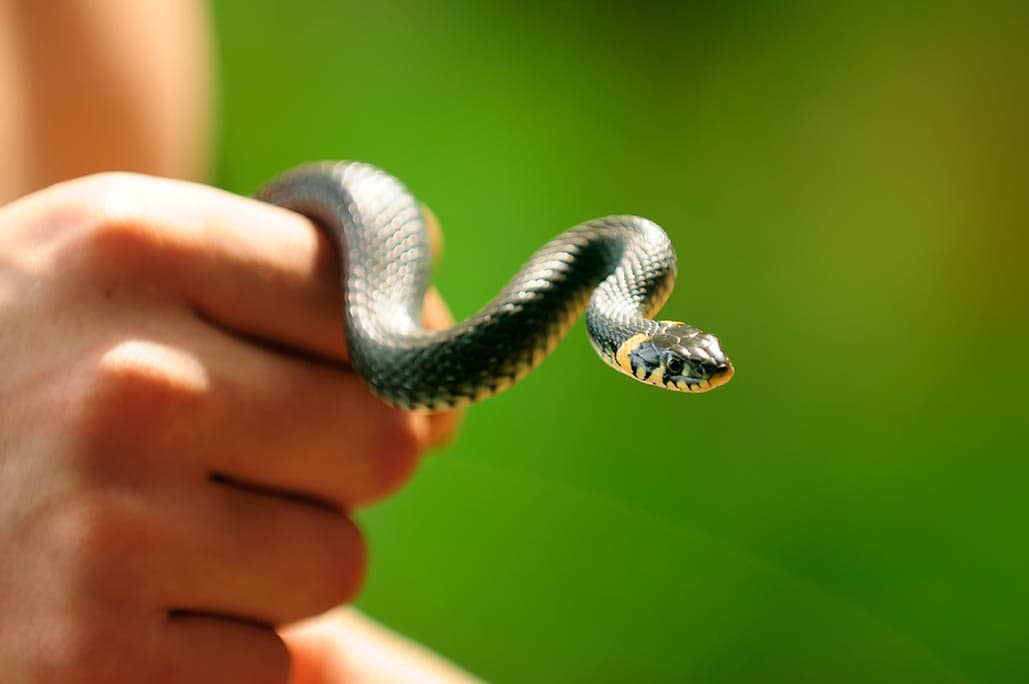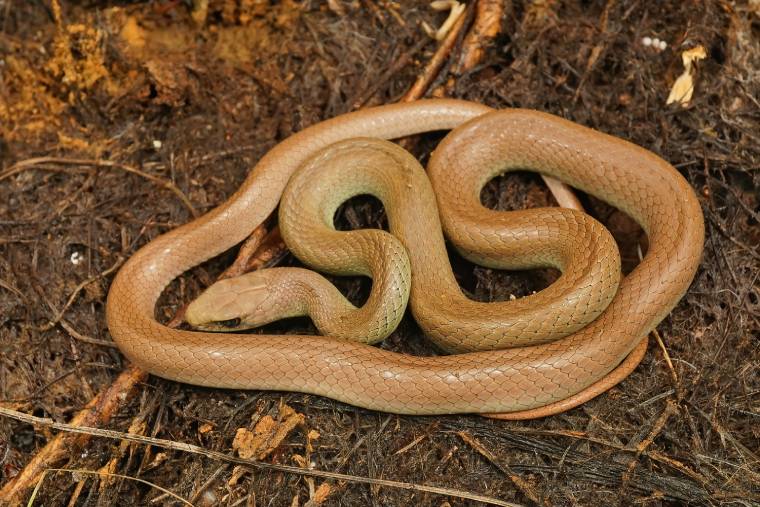
Garter snakes are one of the most common snake species in North America and are often kept as pets because they are easy to care for and relatively harmless. While these snakes do possess a mild neurotoxic venom, it is not dangerous to humans and they rarely bite. They may, however, bite if they feel threatened.
Since these snakes are popular as pets, you may be wondering what they eat. In the wild, the diet of a garter snake varies from bugs to amphibians and small mammals. And as a pet, you want to mimic this as much as possible.
In this article, we look more closely at what these snakes feed on in the wild and how to feed them as pets. Let’s get started!
What Do Garter Snakes Look Like?
Garter snakes come in a wide variety of colors and patterns depending on the species — of which there are 30 known varieties — but most are characterized by three longitudinal stripes that run down their backs and the sides of their body. These stripes are typically yellow or green but can vary depending on the species. Some have additional blotches of color between the stripes, and some have almost no detectable stripes at all.
Most species of garter snakes are fairly small and typically only 23-30 inches long. However, some species are known to reach impressive lengths. Garter snakes can range from 18 to over 50 inches (46 to 130 cm) in length.

Garter Snakes’ Diet in the Wild
Garter snakes, like many other snake species, have a fairly varied diet in the wild. Like most snakes, they are opportunistic carnivores. They may feed on various types of fish if they are available but prefer amphibians or small mammals. Slugs and leeches are also a favorite of garters, and some have also been known to eat small snakes and lizards occasionally.
The main diet of some species of garters, such as the ribbon snake, are small frogs and toads, despite the chemical defenses that these amphibians possess. Garters, especially juveniles, are also fond of earthworms, especially nightcrawlers. Many garters will often feed on mice and other small mammals too, but since these snakes spend most of their time close to water, fish and small amphibians are their main diet.

Garter Snakes’ Diet as Pets
Please note that many states and jurisdictions may have legislation that prohibit owning, breeding, purchasing, or selling snakes as a whole or certain snake species. Always make sure you have the permission to legally own an exotic pet before deciding to adopt one. If you are in the US, please refer to state laws before deciding to adopt an exotic pet. Elsewhere, please refer to the relevant laws where you reside.
Capturing wild animals to keep as pets is not advised, as this disrupts local ecosystems. Likewise, releasing exotic wild pets back to the wild is also not advised, as this too can disrupt the balance of local ecosystems.
Snakes are a long term commitment and are generally not considered safe around children. They are also not compatible with other pets, including cats, dogs, birds, rabbits, and other exotic pets. They are opportunistic hunters that may attempt to strike or constrict anything they perceive as a potential meal, including their handlers.
When keeping a pet garter, you’ll want to keep their diet as close as possible to the way it is in the wild. Variety is the best option but not always possible, so mice — frozen or live — are the best choices. Mice are more readily available than other foods like frogs or fish, and whole frozen mice will give your snake the nutrition that they require. Mice that are adults have a better calcium to phosphorus ratio than those that are just a day or two old. However, smaller snakes might struggle to eat adult mice.
Some garter snakes may need training to eat them, though, so you may need to supplement their meals until they are accustomed to eating mice.

While it might be tempting to feed your captive garter frogs, they are difficult to find and can potentially be riddled with parasites, so you should avoid feeding them to your pet. Fish, however, are acceptable options for your snake, but might be more difficult to source or propagate quickly when keeping a snake as a pet. You should not feed your snake wild-caught fish.
Other acceptable options include:
You should not feed your snake wild-caught prey. Not only might these prove harmful for your pet, but collecting lizards, frogs, or other snakes from the wild may have legal implications, so mice are generally the best options for pet snakes.
How to Feed Garter Snakes
How much and how often you feed your garter will depend on their species, age, reproductive status, health status, size, and the food that you choose to give them.
Generally speaking, a juvenile snake will need to be fed more frequently than an adult, however, your snake’s unique nutritional requirements (and by proxy, their feeding schedule) will depend on the factors listed above. You should discuss your snake’s nutritional plan with your exotic vet or a reliable, knowledgeable herpetologist.
Final Thoughts
Garter snakes in the wild feed on various animals, from earthworms to frogs and even other smaller snakes. While it’s usually good advice to try to replicate the diet of your pet snake to what they would get in the wild, this is difficult and potentially harmful with garter snakes because their main diet of amphibians may harbor harmful parasites. Mice are the easiest option because they are readily available, but your garter will likely readily accept other foods that your vet approves for them.
- Related read: Do Snakes Eat Frogs? Vet Approved Facts & FAQ
Featured Image Credit: Nature-Pix, Pixabay









